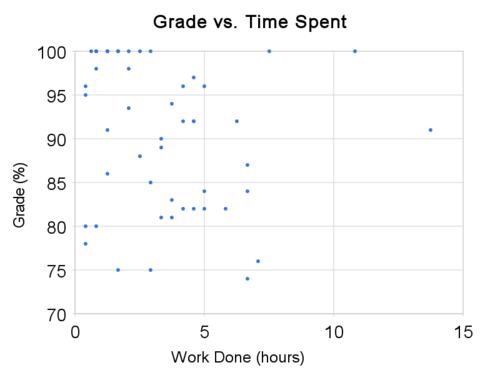School, Stress, Statistics, and the Pomodoro Technique
2010/05/14
My eye had been twitching for two days. I'd gotten maybe four hours of sleep in that time. My grades were going downhill and I felt like there was no way to stop it. I was no stranger to challenging courses, having attended a difficult, private high school, but this I couldn't deal with. As soon as I woke up, I'd start homework, go to classes throughout the day, then work until I fell asleep. I was exhausted and stressed.
This is a portrait of my fall semester of last year in the electrical engineering program at Northeastern University, and it sucked. I needed a way out. At this point, I had a few options. As I saw it, I could either keep doing what I was doing, renegotiate the workload with my professors, find ways to deal with the stress, or fail. For a variety of reasons, I chose to try to manage the stress.
Unfortunately, the first technique I tried (within the last month of the semester) didn't have great results. The technique I settled on with the help of a professional at my school was a breathing exercise for 15 minutes after I woke up in the morning and before I went to bed. This was supposed to relax me, prevent me from burning out. Something I had not realized, perhaps old news to some, is that just because you're not working does not mean you're relaxing. It takes conscious, directed effort to relax effectively.
This method worked for a couple weeks, but was unsustainable beyond that. The stress of classes, mitigated briefly, continued to build up until I ended up in the worst case scenario: not changing anything. I lasted through the end of the semester with no satisfying resolution, only the catharsis of holiday break.
While the relaxation technique didn't end up being very effective, the idea of formal relaxation stuck with me. So when I found The Pomodoro Technique, I was interested. The basic tenant of this productivity system is to do 25 minutes of work, a "Pomodoro", followed by a five minute break. Repeat this three more times and then take a longer break.
A week into this past spring semester, I decided to try it. The constant, formally delimited breaks fell right in line with what I thought would help me handle the stress.
Now that the semester is over, I can judge the results. First, my semester was significantly less stressful. However, I can't attribute that entirely to The Pomodoro Technique. There were many academic and personal factors, most of which I won't go into, that changed between the two semesters. I think the biggest change is that two of the courses I took this semester required significantly less work than the other two, as I'll demonstrate shortly.
Second, I've found that The Pomodoro Technique is really only suitable for certain types of work. For example, it seemed very well-suited for engineering homework, which requires sustained concentration on many problems. One problem usually took about 1 or 2 Pomodoros, thus the breaks were logically spaced; I could feel myself getting tired if I worked for longer than 25 minutes. However, in writing a research paper it seemed that constant breaks interrupted the flow of writing. I have yet to try the technique on other types of work.
Finally, I'd argue that the best feature of the Pomodoro Technique is its inherent qualitative and quantitative mindfulness. The pure Pomodoro Technique suggests that one records their work in spreadsheets to keep statistics. Recording and observing one's work brings with it an acute consciousness of one's habits. One can get a good idea of how much they can work, what type of tasks they can do, and how to recognize stress just by paying attention. That's what happened to me. The Pomodoro Technique is really just a mindfulness technique; that's its true value.
The Stats
As a part of this experiment, I decided to record the amount of time (in Pomodoros) that I worked on homework, projects, and studying for exams (not class time). Below is a summary of these data over a period of 12 weeks.
- Total number of hours worked: 205.21 (492.5 Pomodoros).
- Average number of hours worked per week: 17.1.
- Total number of assignments: 58.
- Average number of hours spent per assignment: 3.54.
- Standard deviation of hours spent per assignment: 3.08 hours.
- Average grade per assignment: 90.9.
Total time spent on each class:
- Electromagnetic Fields and Waves (+lab): 85.42 hours.
- Electronics 1 (+lab): 68.13 hours.
- Fourier Series and Partial Differential Equations: 41 hours.
- Advanced Writing in the Professions: 31.67 hours.

Blah! As you can see, there is very little correlation between the amount of work I did on an assignment and the grade I got on that assignment. If there is a trend, it would be that the longer I worked on an assignment, the lower my grade, not entirely surprising assuming longer assignments were harder.
And that's all the analysis I've done. I would do more, but WOOOOOO SUMMER BREAK!